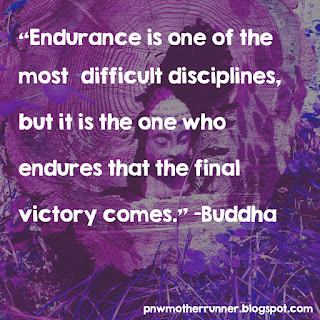How to Be a Balanced Runner
Although
I started running about a year and a half ago, it wasn't until the end
of 2015 that I decided my New Year's resolution would be to take running
to the next level. I wanted to dive in and learn everything that I
could. I joined a local non-profit running club that meets weekly for
track practices. I signed up for my first trail race (10k) to step out
of my comfort zone, followed by other races, and my first half marathon!
Now trust me, I am nowhere close to where I'd like to be. I believe we
can always improve ourselves, push ourselves, and learn new things. Here
is a list of five tips that can assist you in becoming a balanced
runner!
1. Strength Training: Set
aside one day per week to focus solely on strengthening your muscles and
joints. Major benefits include a decreased risk of being injured, improved
overall body composition, and faster running times. As a runner, focus on your
lower body and developing a stronger core. A strong core really helps when you’re
pushing up a tough incline or bombing down a steep trail. Fitness coach JasonFitzgerald states, “Strengthening the hips and glutes is one of the best injury
prevention measures a runner can take. Whether you simply want to run pain-free
or you want to shave some time off your favorite distance, strength training
will help.”
2. Build Endurance: Once a
week, venture out on your long run. Make sure you are prepared with proper
water and food/fuel depending on the distance. Try to aim for consistency by
scheduling your long run on the same day each week, giving you a workout to
look forward to and proper recovery afterwards. Don’t worry about running at a
specific pace, your intention is to build up your distance and muscular
endurance. Focus on your breathing, form, and how your body feels. Endurance
training helps build self-confidence as well as mental strength. Long runs can
be an internal roller coaster of excitement, doubt, accomplishment, and pain.
Choosing an affirmation or mantra can help stable your mind when you get lost
in your thoughts. My personal favorite is, “I am going to make it.”
3. Speed Work: Whether you’re
a beginner or a seasoned marathoner, incorporating speed work will help you
become a well-rounded runner. Again, it’s helpful to dedicate one day
specifically to this training. Running faster at shorter distances will
actually make your usual running pace seem easier and more relaxed. Let’s get
down to the science behind it. Your body is made up of different muscle fibers
commonly known as “slow-twitch” and “fast-twitch”. According to the American Council on Exercise, “…slow-twitch fibers can sustain force for an extended
period of time, but they are not able to generate a significant amount of
force.” Longer distances and endurance exercises are mainly powered by your
slow-twitch fibers, but when you want that explosive start of the race or
strength to pass fellow racers, you need to activate those fast-twitch fibers! ACE
also writes, “Fast-twitch fibers can generate more force, but are quicker to
fatigue…strength and power training can increase the number of fast-twitch
muscle fibers recruited for a specific movement.”
4. Set Goals: Both long-term
and short-term goals are necessary for a focused athlete. It helps to keep a
log or journal of your goals, miles, workouts, etc. so you can stay organized
and reference back to what you’ve accomplished. Do you have a race in a few
months? Is there a certain distance you’re hoping to run by the end of the
year? I personally am a very goal-driven person (both athlete and mother).
Without goals, I feel somewhat lost. I’ll hop on the treadmill with my brain
lost in space, debating if I want to run a fast three miles or hold it out for
a slower eight miles. When my knee gets achy or my lungs start to burn, it’s
easy to want to stop without a specific destination or goal I’m trying to
reach. Instead, when I start my workout with a specific purpose, I am focused.
I know exactly how far to push my body and when I’ll be finished, since I have
a tangible goal to reach! Another type of goal is having a weekly base mileage,
which you can adjust according to your personal running abilities. My minimum
weekly distance is 20 miles.
 |
5. Be Patient: “Patience is not passive; on the contrary,
it is active; it is concentrated strength.”– Edward G. Bulwer-Lytton. I believe patience is the most
importance aspect of being a balanced runner. When you don’t reach the speed or
distance you’re striving for, don’t give up! It may seem easier to quit if you’re
not seeing results, but keep putting in the effort. Sit down and look over your
exercise journal to remind yourself of everything you’ve accomplished. Look at
all of the work you’ve done! Give yourself a pat on the back because you have
made the decision to take control of your health and your life!
References:
Fitzgerald, J. (n.d.). Why Runners Need Strength Training
(And How to Get Started). Retrieved May 18, 2016, from
http://breakingmuscle.com/running/why-runners-need-strength-training-and-how-to-get-started
McCall, P. (2015, October 30). Slow-twitch vs. Fast-twitch
Muscle Fibers. Retrieved May 18, 2016, from
https://www.acefitness.org/blog/5714/slow-twitch-vs-fast-twitch-muscle-fibers





Comments
Post a Comment